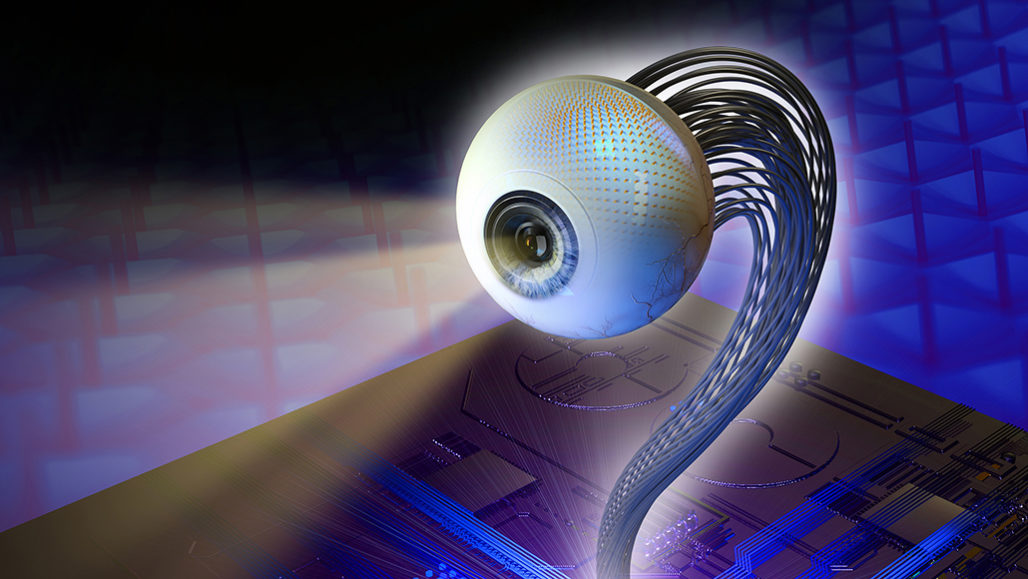A new artificial eye mimics and may outperform human eyes
22. 5. 2020 | Science News | www.sciencenews.org
Scientists can’t yet rebuild someone with bionic body parts. They don’t have the technology. But a new artificial eye brings cyborgs one step closer to reality. This device, which mimics the human eye’s structure, is about as sensitive to light and has a faster reaction time than a real eyeball. It may not come with the telescopic or night vision capabilities, but this electronic eyepiece does have the potential for sharper vision than human eyes, researchers report in Nature.
The human eye owes its wide field of view and high-resolution eyesight to the dome-shaped retina — an area at the back of the eyeball covered in light-detecting cells. Researchers used a curved aluminum oxide membrane, studded with nanosize sensors made of a light-sensitive material called a perovskite, to mimic that architecture in their synthetic eyeball. Wires attached to the artificial retina send readouts from those sensors to external circuitry for processing, just as nerve fibers relay signals from a real eyeball to the brain.

The artificial eyeball registers changes in lighting faster than human eyes can — within about 30 to 40 milliseconds, rather than 40 to 150 milliseconds. The device can also see dim light about as well as the human eye. Although its 100-degree field of view isn’t as broad as the 150 degrees a human eye can take in, it’s better than the 70 degrees visible to ordinary flat imaging sensors.
Read more at Science News
Image Credit: oFantastic ColorAnimation Technology Co., Ltd
-jk-




